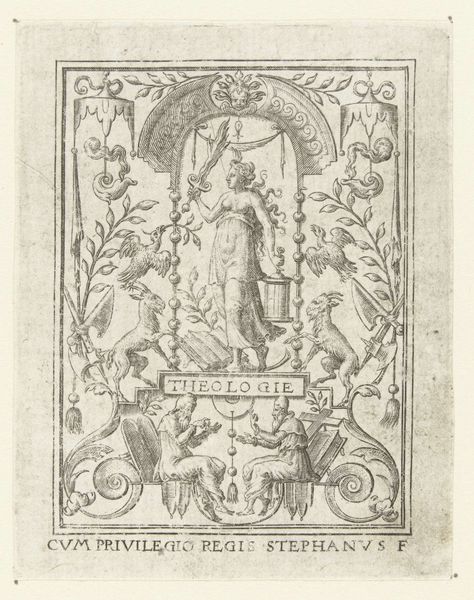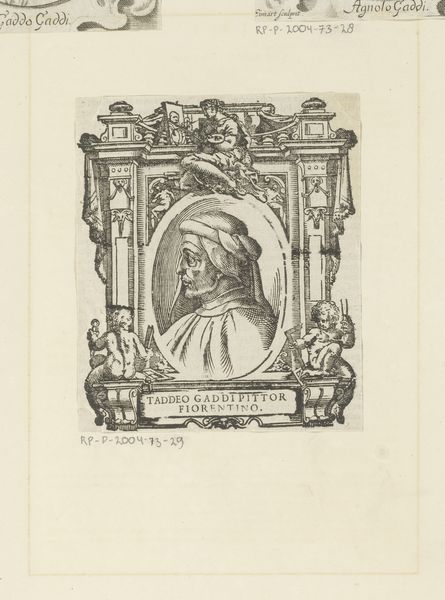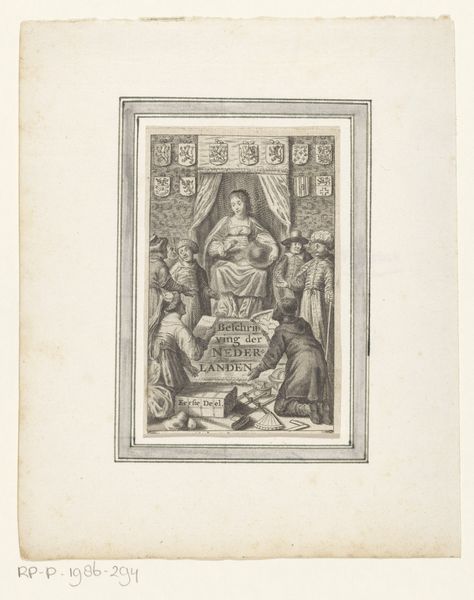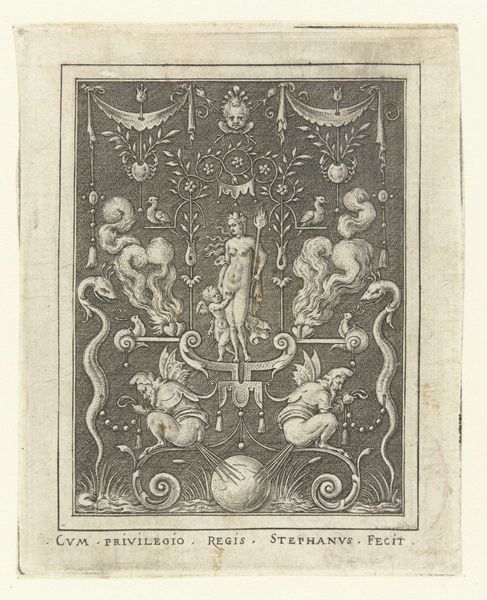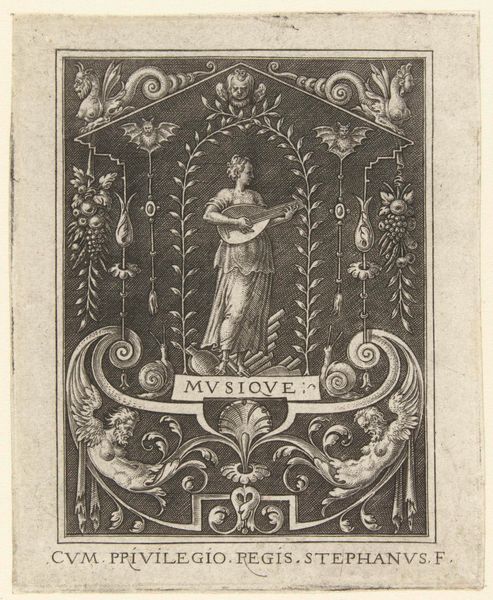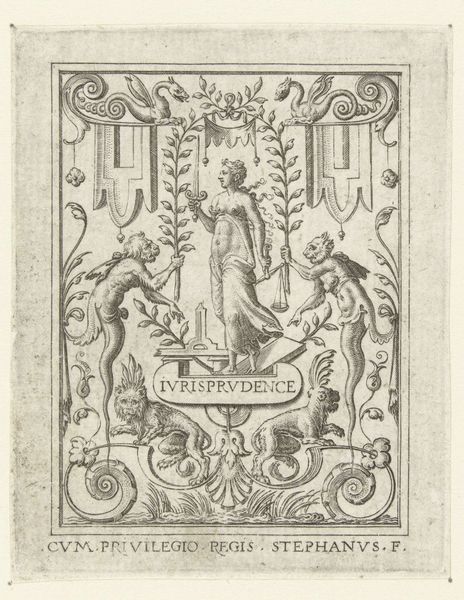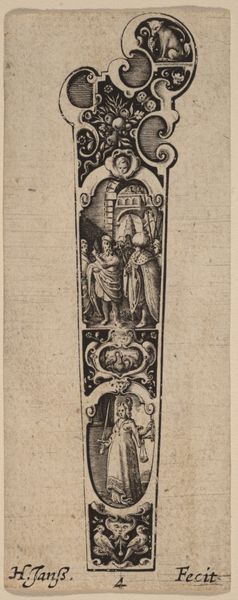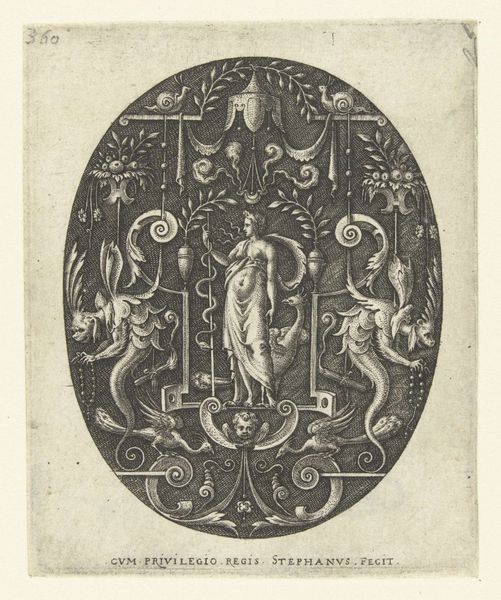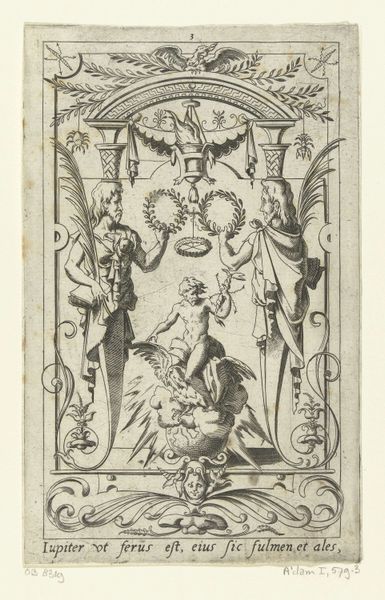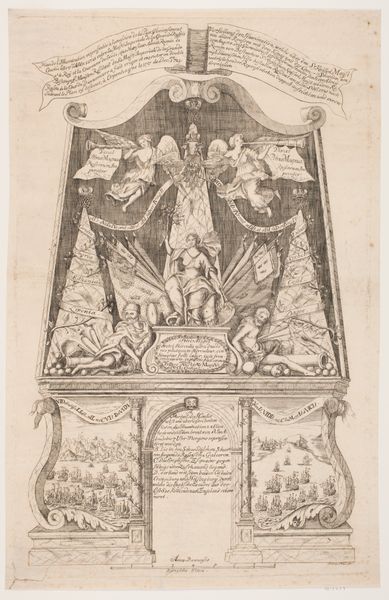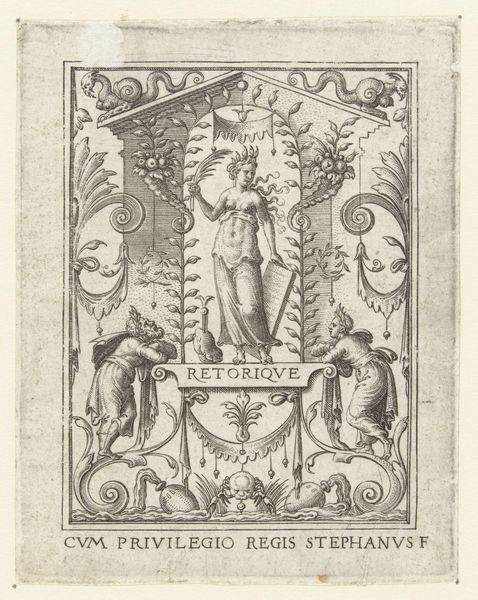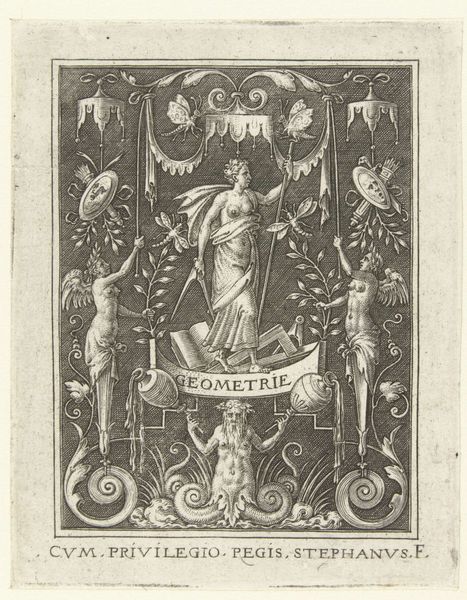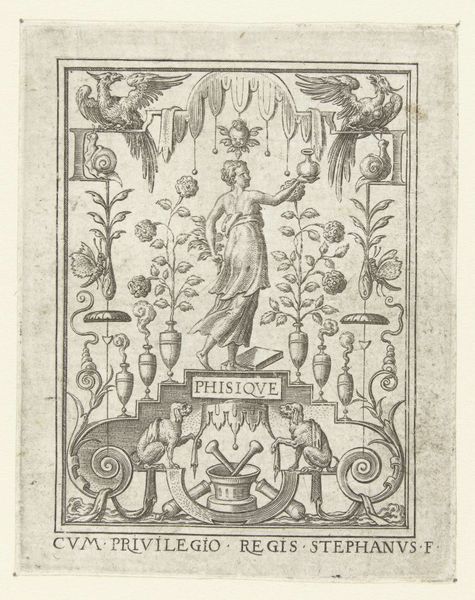
Dimensions: height 81 mm, width 64 mm
Copyright: Rijks Museum: Open Domain
Editor: We’re looking at “Theologie,” an engraving by Etienne Delaune from the late 16th century. It's fascinating; the detail achieved with just lines is striking. The composition feels very ornamental. How do you see it? Curator: Indeed, the linearity dominates. The work presents itself primarily through the intricate relationships between its engraved lines. Note the contrast: the relative density in the draped figure compared to the open, flowing lines in the surrounding ornamentation. Editor: Yes, I see that! The figure, then, is emphasized through line density. What else stands out in terms of formal elements? Curator: Consider how the symmetrical arrangement—the seated figures, the animals—contributes to a sense of order and balance. This symmetry is further echoed by the decorative swags and tassels which contribute to its symbolic structure. It imposes a controlled aesthetic, reinforcing the seriousness of the subject, "Theologie." Editor: So the balanced composition mirrors the pursuit of theological understanding? Curator: Precisely. Furthermore, the contrast between the sharp lines of the architectural frame and the softer, organic curves of the foliage adds another layer of visual complexity. How does this interplay contribute to the overall impact? Editor: It’s interesting. It gives it a sense of tension, a push and pull. I hadn’t thought about it that way. Curator: Line and composition work to create a symbolic architecture; these Renaissance prints encoded messages. Editor: This focus on the interplay of line has revealed aspects I wouldn't have noticed otherwise. Thank you!
Comments
No comments
Be the first to comment and join the conversation on the ultimate creative platform.
